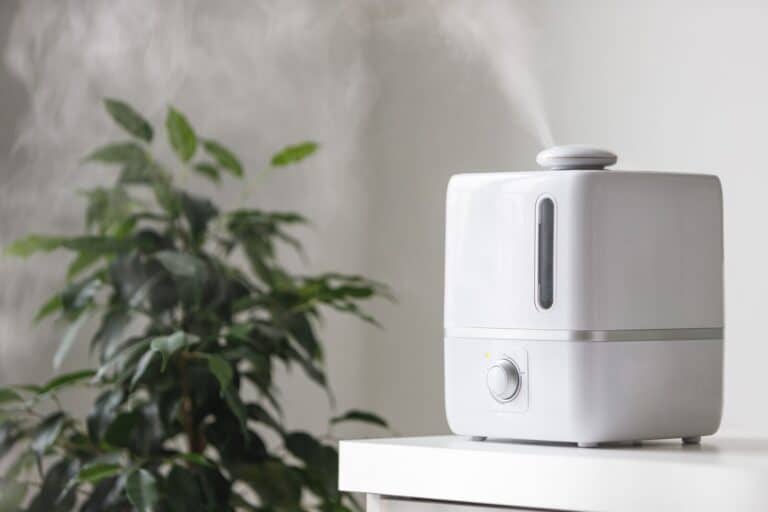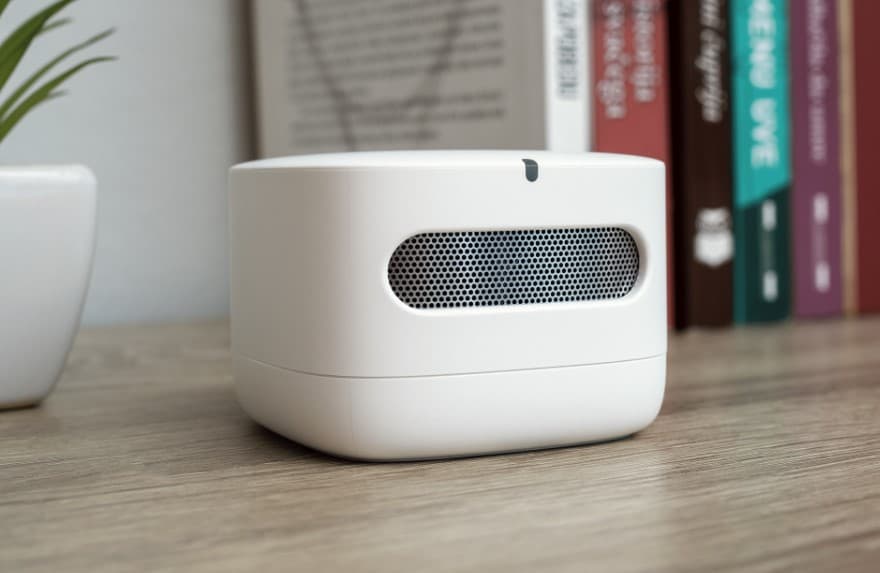Maintaining good indoor air quality is crucial for promoting health and well-being.
Indoor air quality (IAQ) monitors play a vital role in detecting various pollutants, but can they detect ozone? let’s find out!
What is Ozone?
Ozone (O3) is a colorless gas composed of three oxygen atoms.
While ozone is beneficial in the Earth’s stratosphere, where it protects against harmful ultraviolet (UV) radiation, ground-level ozone can be harmful to human health.
is beneficial in the Earth’s stratosphere, where it protects against harmful ultraviolet (UV) radiation, ground-level ozone can be harmful to human health.
Ground-level ozone is a major component of smog and is formed by chemical reactions between nitrogen oxides (NOx) and volatile organic compounds (VOCs) in the presence of sunlight.
Can Indoor Air Quality Monitors Detect Ozone?
Many indoor air quality monitors are equipped with sensors specifically designed to measure ozone levels. These monitors provide readings to alert occupants if ozone concentrations exceed recommended safety thresholds, helping to maintain a healthy indoor environment.
Indoor air quality monitors are kind of versatile tools capable of detecting various indoor pollutants, but their ability to detect ozone depends on the specific sensors they are equipped with.
While some indoor air quality monitors may include sensors capable of detecting ozone, not all monitors are designed to do so. Ozone detection typically requires specialized sensors that can accurately measure ozone concentrations in the air.
These ozone sensors operate on different principles than sensors used to detect other indoor pollutants such as VOCs or particulate matter.
They are specifically calibrated to detect ozone molecules and are sensitive to even low concentrations of ozone in indoor environments.
If ozone detection is a priority for your indoor air quality monitoring, it’s essential to choose a monitor equipped with ozone sensors or to use additional ozone detection equipment specifically designed for this purpose.
This ensures accurate measurement of ozone levels and enables you to take appropriate actions to maintain indoor air quality.

Types of Ozone Sensors:
There are several types of ozone sensors used in indoor air quality monitors:
Electrochemical Sensors: Electrochemical sensors are commonly used for detecting ozone in indoor environments.
These sensors operate by measuring the electrical current generated when ozone reacts with a chemical electrolyte.
Optical Sensors: Optical sensors rely on light absorption or scattering properties to detect ozone molecules in the air.
These sensors typically use ultraviolet (UV) light sources to measure ozone concentrations based on the absorption of UV radiation by ozone molecules.
Optical sensors can provide real-time measurements of ozone levels and are often used in environmental monitoring applications.
Metal Oxide Sensors: Metal oxide sensors detect ozone by measuring changes in electrical conductivity when ozone molecules interact with a metal oxide surface.
These sensors are less commonly used for ozone detection in indoor air quality monitors but can offer cost-effective solutions for certain applications.
Factors to Consider When Choosing an Ozone-Sensing Indoor Air Quality Monitor:
When selecting an indoor air quality monitor for ozone detection, consider the following factors:
Sensor Type: Choose a monitor equipped with an ozone-specific sensor, such as an electrochemical or optical sensor, for accurate and reliable ozone detection.
Sensitivity and Accuracy: Ensure that the monitor’s sensor has sufficient sensitivity and accuracy to detect ozone concentrations at levels relevant to indoor air quality standards and guidelines.
Calibration and Maintenance: Regular calibration and maintenance of the ozone sensor are essential for ensuring accurate measurements over time.
Choose a monitor with user-friendly calibration procedures and consider the availability of calibration services.
Data Logging and Analysis: Look for a monitor that offers data logging capabilities and analysis software to track ozone levels over time and identify trends or patterns in indoor air quality.
Integration with Other Sensors: Consider whether the monitor can integrate with other sensors to detect additional indoor pollutants, providing comprehensive air quality monitoring capabilities.

What are the different sources of ozone at home?
Ozone at home can originate from various sources such as air purifiers, ionizers, photocopy machines, laser printers, and certain types of electronic equipment.
Additionally, ozone can enter homes from outdoor sources like air pollution and electrical equipment.
Air Purifiers and Ionizers: Some air purifiers and ionizers generate ozone as part of their air purification process. While ozone can help eliminate odors and airborne particles, excessive ozone levels can be harmful to health.
Photocopy Machines and Laser Printers: Photocopy machines and laser printers emit ozone during their operation due to the electrical discharge process. Prolonged use of these devices in enclosed spaces can elevate indoor ozone levels.
Electronic Equipment: Certain electronic devices, such as electronic air cleaners, UV lamps, and ozone generators, may emit ozone as a byproduct of their functioning.
You should try to follow manufacturer instructions to minimize ozone exposure when using such equipment.
Outdoor Sources: Outdoor air pollution, including vehicle emissions and industrial activities, can introduce ozone into indoor spaces through ventilation systems, windows, and doors.
High outdoor ozone levels can infiltrate homes, particularly in urban areas with poor air quality.
Indoor Activities: Ozone can also be produced indoors during specific activities, such as cooking with gas appliances or using certain cleaning products.
These activities may generate ozone as a secondary pollutant, especially in poorly ventilated areas.
How can I reduce indoor ozone levels?
To effectively reduce indoor ozone levels and minimize exposure, consider implementing the following strategies:
Ventilation: Increase ventilation by opening windows and doors when outdoor ozone levels are lower than indoor levels.
Use exhaust fans in kitchens and bathrooms to expel indoor air pollutants, including ozone.
Source Control: Identify and eliminate or minimize sources of ozone emissions indoors. Replace or properly maintain electronic devices, air purifiers, and other equipment that generate ozone. Consider upgrading to ozone-free alternatives if necessary.
Air Purification: Invest in air purifiers equipped with HEPA (High-Efficiency Particulate Air) filters or activated carbon filters, which effectively capture airborne pollutants without generating ozone.
Ensure that the air purifier is certified ozone-free by reputable organizations.
Avoidance: Be mindful of activities that can contribute to indoor ozone generation. Avoid using ozone-generating equipment, such as ionizers and ozone generators.
Choose cleaning products labeled as ozone-friendly and avoid using products that contain ozone-releasing chemicals.
Regular Maintenance: Perform regular maintenance on appliances and equipment to ensure they function properly and do not produce excess ozone.
Clean or replace air filters in HVAC systems, air purifiers, and other devices according to manufacturer recommendations.
Indoor Plants: Consider adding indoor plants known for their air-purifying properties, such as spider plants, peace lilies, and snake plants.
While plants can help improve indoor air quality, they are not effective at removing ozone.
By implementing these measures, you can effectively reduce indoor ozone levels and create a healthier indoor environment for yourself and your family.
Regular monitoring of indoor air quality can also help ensure that ozone levels remain within safe limits.

Health Effects of Ozone Exposure:
Exposure to high levels of ozone can indeed have adverse health effects, particularly on the respiratory system.
When people breathe in ozone, it can irritate the lining of the respiratory tract, leading to various symptoms and health problems.
Here are some of the health effects associated with ozone exposure:
Throat Irritation: Ozone can irritate the throat, causing discomfort, soreness, and scratchiness.
This irritation may be more pronounced in individuals who are sensitive to ozone or who have pre-existing respiratory conditions.
Coughing: Ozone exposure can trigger coughing as the body attempts to clear the airways of irritants.
This reflexive response is the body’s way of trying to protect the respiratory system from further irritation.
Chest Pain: Some individuals may experience chest pain or discomfort when exposed to high levels of ozone.
This sensation can range from mild discomfort to more severe pain, depending on the individual’s sensitivity and the concentration of ozone in the air.
Shortness of Breath: Ozone can impair lung function and make it harder for individuals to breathe comfortably.
and make it harder for individuals to breathe comfortably.
Shortness of breath, or dyspnea, may occur, especially during physical exertion or outdoor activities.
Exacerbation of Respiratory Conditions: Long-term exposure to ozone has been linked to the exacerbation of respiratory conditions such as asthma, bronchitis , and emphysema
, and emphysema .
.
Ozone can worsen symptoms in individuals with these conditions, leading to increased coughing, wheezing, chest tightness, and difficulty breathing.
in individuals with these conditions, leading to increased coughing, wheezing, chest tightness, and difficulty breathing.
Decreased Lung Function: Prolonged exposure to ozone can cause inflammation and damage to the lungs, resulting in a decrease in lung function over time.
and damage to the lungs, resulting in a decrease in lung function over time.
This decrease in lung function may be particularly problematic for vulnerable populations, such as children, the elderly, and individuals with pre-existing respiratory diseases.

FAQs
Can indoor air quality monitors detect other harmful gases besides ozone?
Indoor air quality monitors can detect a wide range of harmful gases and pollutants besides ozone, including volatile organic compounds (VOCs), carbon dioxide (CO2), carbon monoxide (CO), formaldehyde, radon, and particulate matter (PM).
besides ozone, including volatile organic compounds (VOCs), carbon dioxide (CO2), carbon monoxide (CO), formaldehyde, radon, and particulate matter (PM).
These monitors are equipped with specialized sensors tailored to detect specific pollutants, providing comprehensive air quality monitoring capabilities.
tailored to detect specific pollutants, providing comprehensive air quality monitoring capabilities.
Are ozone levels higher indoors or outdoors?
Ozone levels can vary depending on indoor and outdoor factors. In general, outdoor ozone levels tend to be higher than indoor levels due to emissions from sources such as vehicle exhaust, industrial processes, and sunlight-driven chemical reactions.
However, indoor ozone levels can increase if outdoor air containing ozone infiltrates indoor spaces or if indoor sources such as electronic devices or air purifiers emit ozone.
Conclusion:
Indoor air quality monitors equipped with specialized ozone sensors play a crucial role in detecting ozone levels indoors.
By providing accurate and real-time measurements of ozone concentrations, these monitors help ensure the safety and well-being of occupants in indoor environments.
When selecting an indoor air quality monitor for ozone detection, it’s essential to consider factors such as sensor type, sensitivity, accuracy, calibration, and data analysis capabilities.
With the right monitor in place, building occupants can take proactive steps to minimize ozone exposure and maintain a healthy indoor environment.

